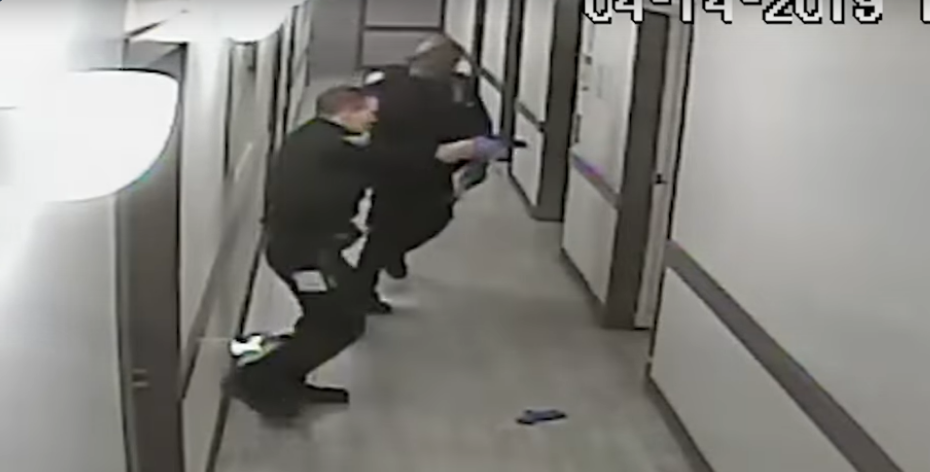Photos: YouTube
WASHINGTON — Today, Representatives Seth Moulton, Alexandria Ocasio-Cortez, and Jim Costa and Senators Ed Markey and Kirsten Gillibrand began circulating a bicameral letter addressed to the committee chairs and leadership of both chambers. They are seeking increased funding for high-speed rail in the American Jobs Plan.
The group represents a broad coalition within the Democratic party making a united appeal to fund high-speed rail at levels that equal the funding Congress provides to road and air travel.
In the letter, the lawmakers said, “With the new administration, we have a generational opportunity to invest in our nation’s infrastructure, and we are grateful for your leadership in ensuring we invest in next generation infrastructure, not just the infrastructure of the past. As negotiations continue to develop around a comprehensive infrastructure package, we write to express our support for the inclusion of dedicated funding to develop international-standard high-speed rail with high-performance connections that feed into a larger network. A federal commitment to these modern and proven transportation systems will dramatically improve our environment, reduce inequity, and help grow cities and sustain vibrant downtowns across the nation.”
The letter has received early endorsements from the following organizations as of press time: The American Public Transportation Association (APTA); The High Speed Rail Alliance; The U.S. High Speed Rail Association; Former Amtrak Vice President of High-Speed Rail and Immediate Past Chair of the APTA High-Speed and Intercity Passenger Rail Committee Al Engel; Brightline Trains; SYSTRA USA; Building America’s Future; Emeritus Chair of California High Speed Rail Authority and former APTA Chair Rod Dirido; the American Train Dispatchers Association; National Conference of Firemen & Oilers, SEIU; American Train Dispatchers Association; HJI Group Corporation; Cascadia Rail; and Transportation for Massachusetts.
The full text of the letter is as follows:
Dear Leader Schumer, Speaker Pelosi, Leader McConnell, Leader McCarthy, Chair Cantwell, Chairman DeFazio, Ranking Member Wicker, and Ranking Member Graves:
With the new administration, we have a generational opportunity to invest in our nation’s infrastructure, and we are grateful for your leadership in ensuring we invest in next generation infrastructure, not just the infrastructure of the past. As negotiations continue to develop around a comprehensive infrastructure package, we write to express our support for the inclusion of dedicated funding to develop international-standard high-speed rail with high-performance connections that feed into a larger network. A federal commitment to these modern and proven transportation systems will dramatically improve our environment, reduce inequity, and help grow cities and sustain vibrant downtowns across the nation.
Reducing emissions from the transportation sector is critical to meeting our nation’s climate goals and cutting our carbon footprint. According to an Environmental Protection Agency report, the transportation sector accounted for 28 percent of total greenhouse gas emissions from 1990 to 2018, making it the largest contributing sector.
A robust network of high-speed rail corridors with high-performance connections is the best option to dramatically reduce carbon emissions while improving intercity travel. It will be decades before aviation is carbon-free, and electric cars – although vital – will not improve highway speeds. By contrast, electrified high-speed rail will capture a significant portion of demand for travel between 250 and 1000 miles with greater efficiency than flying or driving. Notably, the average and median distances of American long-distance travel are 744 and 391 miles, respectively. High-speed rail also dramatically reduces land use: a single high-speed rail line matches the capacity of six highway lanes, 91 airport gates, and two new runways.
As we rebuild coming out of the pandemic, investing in a high-speed rail network with high-performance rail connections will create direct, good-paying, and secure jobs immediately, while enabling long-term economic growth across whole megaregions and providing vital access to opportunity for smaller communities. Good-paying jobs provide benefits through construction and engineering, steel production, and manufacturing in the rail sector, but also result in economic development around stations both in major cities and in intermediate communities. High-speed rail also reduces regional disparities—as it did in China by an average of 25% —through increased access to jobs and housing. A high-speed rail line from Chicago to Atlanta is equivalent to Beijing to Shanghai, and would connect the people and economies of intermediate cities like Indianapolis, Louisville, Nashville, and Chattanooga with two top-ten Gross Metropolitan Product metropolises.
A recent study by Microsoft, Oregon, Washington, and British Columbia of the Cascadia Corridor estimated $355 billion in economic benefits from building a 250 mph high-speed rail line, a 10:1 return on investment. Consider an alternative: adding a lane of highway in each direction would cost more than twice as much, the study estimates, and accrue almost no additional economic benefits because travel times would not improve. Likewise, making only modest investments to existing rail service would provide travelers with an attractive alternative to driving, but would not improve overall travel times enough to generate anywhere near this scale of economic benefits. Even countries like Morocco, with roughly half a percent of the U.S. GDP, are building true high-speed rail because the return on investment is so positive.
Properly designed, high-speed trunk lines form the backbone of a broader integrated network. Airport connections to high-speed rail in Europe and Asia are routine, as are higher-speed feeders, and local connections speed travelers at low environmental cost to their destinations. Germany and France, for instance, have prioritized high-speed rail for domestic travel, with connections to airports for international travel. In San Jose, California, high-speed rail will connect to a hub with six rail systems and several bus lines at Diridon Station. Seamless connections such as this boost the ridership and economic efficiency of all the component elements. In addition, a series of high-performance rail lines will ensure that smaller and more historically disadvantaged communities have their own connections into a larger national network of travel and opportunity.
As Congress advances legislation to build back better as a nation, we urge you to create a carve-out for dedicated high-speed rail corridor planning and development grants, which will enable investments in high-speed and high-performance rail. In the event that Congress advances the American Jobs Plan through budget reconciliation, we request that you raise the topline funding levels for transportation in the budget resolution above the American Jobs Plan number to include dedicated high-speed rail corridor planning and development funding with high-performance rail connections. This will demonstrate that the federal government is ready to commit as a partner in developing high-speed rail corridors across the United States, connecting communities, enhancing economic development, and protecting our environment.
Thank you for your full and fair consideration of these requests. We stand ready to work with you to deliver an infrastructure package for the American people.












